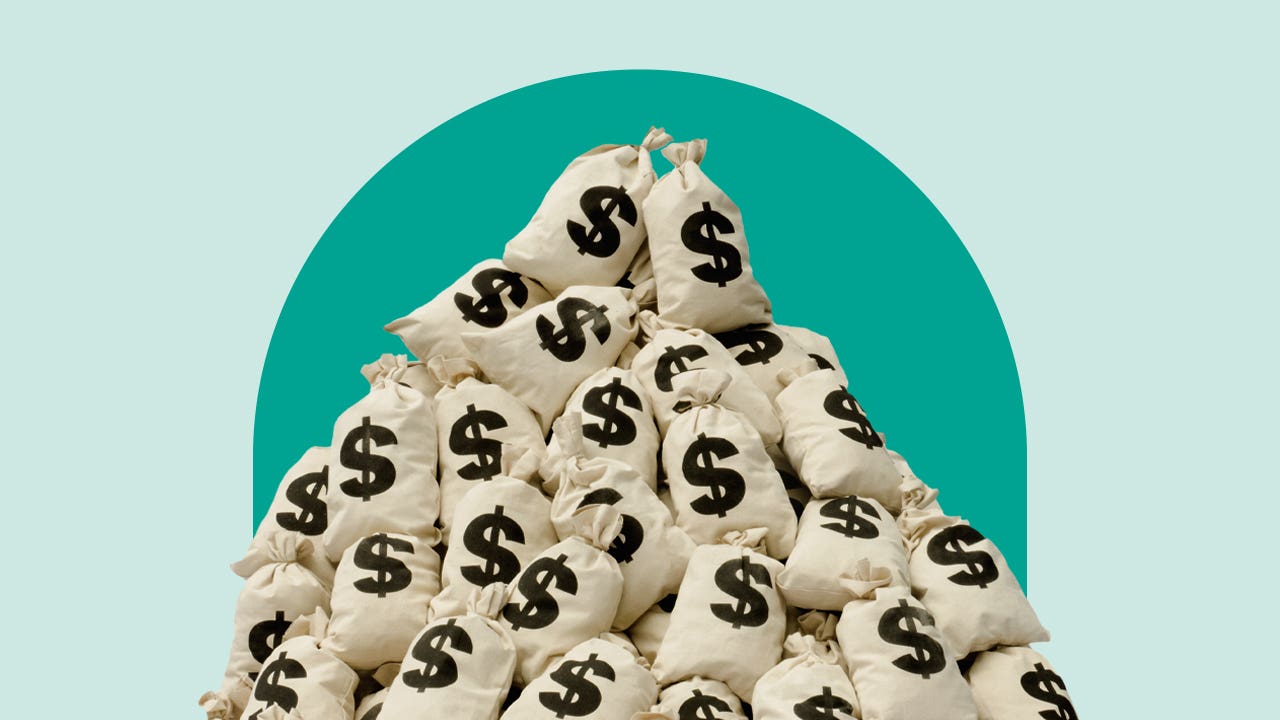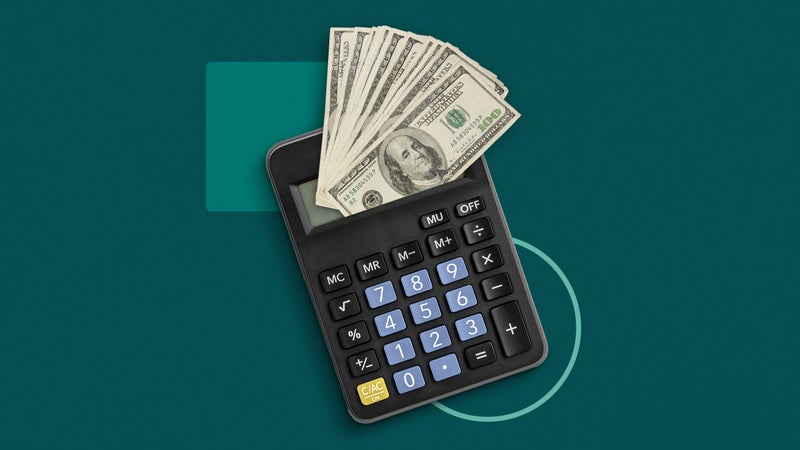8 types of personal loans and their uses — plus 5 to avoid

The Bankrate promise
At Bankrate we strive to help you make smarter financial decisions. While we adhere to strict , this post may contain references to products from our partners. Here's an explanation for .
Key takeaways
- Personal loans come in many forms, including secured and unsecured loans, debt consolidation loans and personal lines of credit.
- Unsecured personal loans are common among lenders and don't require collateral.
- Secured personal loans are less common and require collateral — but usually offer lower interest rates.
- You can use personal loans for a variety of purposes, such as consolidating debt, paying off medical debt or financing a home improvement project.
Secured and unsecured personal loans are available through banks, credit unions or online lenders. Different personal loan types are available for a wide range of purposes.
You’re not alone if you’re considering a personal loan to get over a financial setback or consolidate debt. According to a recent Experian study, the average consumer has personal loan debt of around $19,402. However, depending on your credit and financial situation, some personal loans work better than others.
Types of personal loans
Personal loans are a highly flexible product, with rates, terms and types for people with many different credit profiles.
Know your credit score before applying. This will help you decide whether you should get an unsecured or secured personal loan and whether to consider a joint or co-signed loan.
You should also have a clear picture of your financing needs and a clear financial goal before you apply. This will further narrow down the type of loan that is best for you.
It may also help you determine where to start your search. Different personal loans are available from different banks, credit unions and online lenders.
Unsecured personal loans
An unsecured personal loan doesn’t require collateral to get approved. Qualifying is based on your credit score and income.
Because of this, you’ll typically need good or excellent credit to get approved for the best rates.
Some lenders consider your employment and education history as well.
If you default on an unsecured personal loan, you won’t risk losing an asset. You will, however, damage your credit. You may also face high fees and legal proceedings if you can’t repay.
Secured personal loans
Like auto loans and mortgages, secured personal loans require collateral for approval. Rather than being backed by a car or house, a secured personal loan might rely on something like a certificate of deposit (CD) or a savings account.
Because the loan is secured, the lender takes on less risk and may offer lower interest rates than you would get with an unsecured personal loan. The tradeoff is that if you default you risk losing the asset you put up as collateral. This is because the lender can legally seize it to offset what you owe.
Debt consolidation loans
Debt consolidation loans are used to pay off outstanding debt balances faster and save on interest. Borrowers also get the benefit of streamlining the repayment process by combining multiple debts into a single monthly payment.
The idea is to borrow a loan with a lower interest rate than what you currently pay on the debts — credit card, medical and other bills — you plan to consolidate. You’ll use the loan to pay off those balances and make payments on a new loan product for a set period.
Your new loan may come with fees, such as an origination fee, that could cut into your savings. And make sure you have a plan to manage your loan so you don’t end up in deeper debt.
Co-signed and joint loans
If you’re unable to qualify for a personal loan on your own, a lender might approve you with a creditworthy co-signer.
Your co-signer must be willing to assume equal responsibility for the loan without being able to access the funds. They must also be able to support the cost of the loan on their income.
If you default on the loan payments and they don’t cover it, their credit score will decrease along with yours.
Some lenders also offer joint loans, which allow both borrowers to access the loan funds. Like co-signed loans, both parties will be liable for loan payments. Your co-borrower will need good or excellent credit to strengthen your chances of getting approved for a loan.
Fixed-rate loans
Fixed-rate loans come with an interest rate that doesn’t change over the repayment term. You make the same monthly payment for the duration of the loan, with a portion of each monthly payment going toward the interest and principal.
The overwhelming majority of personal loans fit into this category. Because the payments don’t change over time, it is easy to budget accordingly when you take out a fixed-rate personal loan.
Variable-rate loans
The interest rate on a variable-rate loan can fluctuate based on market conditions. However, you may be able to get a lower APR on a variable loan than you would with a fixed-rate loan.
The downside, of course, is that your variable rate could increase. Budgeting variable-rate loan payments may also be more challenging because they change over time. You may want to take a shorter-term loan to pay it off faster and avoid the risk of the rate rising too much.
Personal line of credit
A personal line of credit gives you access to a pool of funds that you can borrow from when you need to — similar to a credit card. You’ll only pay interest on the amount you borrow.
This may be a good option for people who want flexible access to funds but want a better rate than a credit card. A line of credit may be helpful for a kitchen or bathroom renovation, overdraft protection or an ongoing emergency.
Personal lines of credit typically have variable rates and can be secured by a banking asset, but you may be able to find unsecured options with online lenders or smaller banks.
Buy now, pay later loans
Buy now, pay later loans allow you to make a purchase without paying the total purchase price upfront. Instead, the balance is divided and payable in equal installments, typically due in full within six weeks of the purchase date.
These loans are often offered through mobile apps, like Afterpay, Klarna and Affirm. Most lenders will review your bank activity and may conduct a soft credit check, which won’t impact your credit score.
This means you could get approved for a buy now, pay later loan with less-than-perfect credit if you have the income to support the payments.
On-time payments on BNPL loans are not typically reported to the credit bureaus, though late payments may be. That means this type of funding is more likely to harm your credit score than help it. Beware the temptation to overspend or take out more BNPL loans than you can juggle.
Types of loans to use sparingly
Some personal loans have extraordinarily high interest rates and should only be used as a last resort. For borrowers with bad credit or no access to a bank account, they may be one of a limited set of options.
If you can avoid them, you should. But if you can’t, be sure to keep on top of payments and try to pay off the loan as quickly as possible.
- Credit card cash advances: Some credit card issuers allow you to take a cash advance from your available credit at an ATM or bank. This perk comes at a hefty cost. You’ll likely be assessed a cash advance fee and a higher interest rate on the amount you borrow.
- Cash advance apps: These apps also let you access fast cash, usually up to $250, until payday. Most lenders charge a monthly fee to use their service, and you’ll have to repay what you borrow on your next payday or within a two-week period.
- Payday loans: These loans are a costly form of debt that cater to borrowers with poor credit. Payday loans typically come with steep fees and interest rates well over 300 percent. They can lead to a dangerous debt cycle if you can’t repay and end up having to extend the loan term.
- Pawnshop loans: If your local pawnshop offers loans, you can exchange your asset for cash. You’ll likely pay a huge amount of interest, and the pawnshop will keep your property if you default.
- Title loans: A car title loan uses your vehicle’s title as collateral. You borrow against the value of your car, which means lower interest rates than unsecured options. But you risk high fees — or even losing your car — if you miss any payments.
The bottom line
There are several types of personal loans to choose from. Each has benefits and drawbacks. Before applying, understand how personal loans work and what to expect. Evaluate lenders carefully to ensure you select the ideal personal loan product for you.





